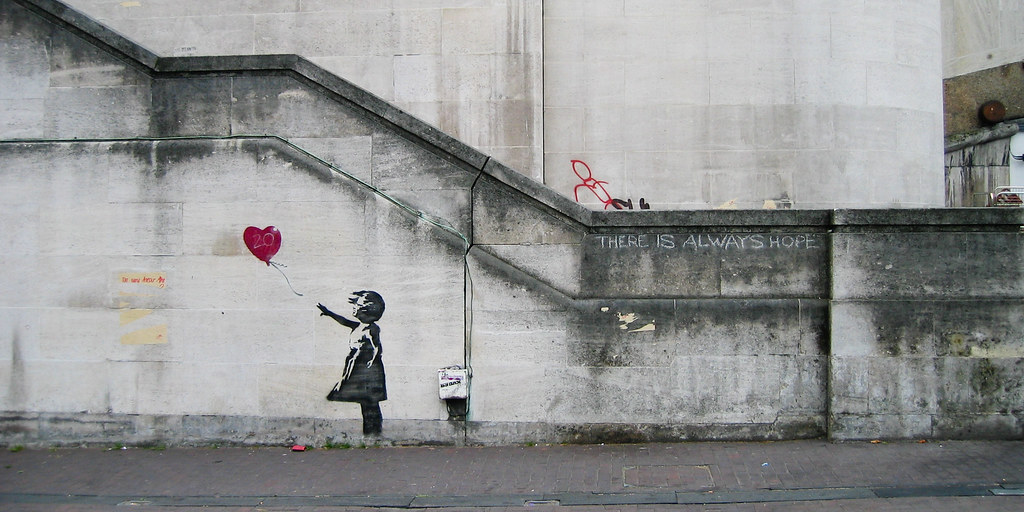
Last month, a newly confirmed installation by the street artist Banksy was forcibly removed from a London sign. The piece, depicting three military aircrafts painted on a stop sign which many have interpreted to be a call for ceasefire in Gaza given Banksy’s support for Palestine, was confirmed as an official Banksy piece via his Instagram on 22nd December. Less than an hour later two men removed the sign using bolt-cutters and an onlooker’s lime bike whilst a crowd watched in horror.
The Metropolitan police initially stated they are unable to investigate the incident as, owing to Banksy’s anonymity, nobody has reported the artwork stolen. However, two men have been arrested since on suspicion of criminal damage. It’s current whereabouts are unknown, denying the public the ability to view what was originally intended as a free and accessible piece of art.
Owing to Banksy’s anonymity, nobody has reported the artwork stolen.
This is hardly the first time a Banksy has been damaged or stolen; Spy Booth was removed, and potentially destroyed, in 2016; Valentine’s Banksy was defaced only days after its unveiling, and Girl with Balloon was famously shredded at auction by Banksy himself. In its predisposition to being destroyed, Banksy’s art raises important questions about how best to protect anonymous art. The obvious solution would be, when possible, to sell the art or move it to museums- but not only does the nature of street art make this difficult, when Banksy painted on a protected Grade II listed building for instance, but it damages the integrity of the art. Street art is by its nature supposed to be publicly accessible- private ownership threatens this. This is the dilemma of protecting art; if we hold art under lock and key it may be protected from damage, but the very point of the artwork is diminished- it becomes accessible only to those who hold the key. This is particularly potent for artists like Banksy, who frequently presents political commentaries intended to reach a wide audience. As Banksy works continue to pop up around the globe, this is a question lawmakers, the public and artists will have to grapple with- how far is too far when it comes to protecting art?


